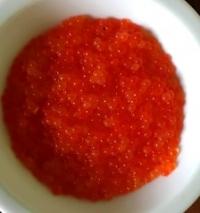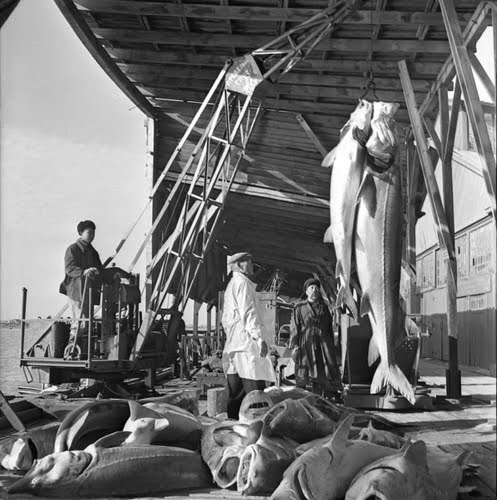Вы здесь
Caviar in Kazakhstan.


Сaviar may be an expensive luxury at champagne parties, but it is just ordinary food in some villages on the Caspian shore. The Caspian littoral states produce 90 percent of the world's "real" caviar.
This, however, could soon be a thing of the past. The larger Caspian sturgeon such as the osetra, the beluga (the largest - and the only predatory - sturgeon) and the sevryga are being mercilessly overfished.
Stocks have shrunk by 90 percent since the 1980s, and rising prices tell the story: even in Kazakhstan genuine caviar has become expensive, with a kilo of Beluga costing 200 - 300 Euros from a Caspian fisherman, though that is nothing compared to the 6,000 Euros it would cost in Europe - if you can find it.
But the fishermen see little of those huge profits, which mainly go to Russian "mafia" middlemen, who enrich themselves in the international caviar trade. Protection schemes are no match for criminal organizations - the illegal trade in caviar is 10 times that of the legal commerce.
In 2006, for the first time the UN Convention on International Trade in Endangered Species (CITES) no longer allocated a trade quota to the traditional exporters of wild caviar from the Caspian countries of Russia, Kazakhstan and Azerbaijan.
For a long time attempts have been made to regenerate the fish population. On the Iranian side, millions of fingerlings are raised in ponds and released into the Caspian annually. However, it takes a sturgeon 10-20 years to mature, and as they reach a considerable size some time before that, it still pays to catch them earlier than that.
Poverty in the villages along the coast and the rivers Volga and Ural - where the fish come to spawn - inevitably drives people to fishing, exacerbating the problem. Since the Volga has been blocked by dams and thus has grown increasingly polluted, the sturgeon are spawning more often in the Ural River mouth.
A war at sea has now developed between fishermen, with Dagestani fishermen from Russia pursuing the sturgeon with speedboats right into Kazakhstan's territorial waters, catching the fish with gillnets and disappearing again.
It is actually possible to harvest caviar without killing the fish. Shortly before the eggs are laid, one can "milk" them from the female. This actually produces the finest and tastiest caviar of them all, according to experts.
- Those who want to sample the very best caviar should observe the following:
- Sturgeon caviar is black or grey (red caviar comes from salmon) Its true taste is only preserved if it is kept in glass, as tins distort the flavour
- Caviar has only been produced in a genuine and legal manner if the glass's lid bears a GOST certificate and the serial number of the producer as well as the dates of production and expiry
- Grease on the glass indicates bad preservation or the addition of agents
- The best way to take caviar is with a shot of ice-cold vodka - this accentuates the delicate taste, rather than distorting it as champagne does.

Authority:
The guidebook across Kazakhstan . Authors Dagmar Schreiber and Jeremy Tredinnick. Publishing house "Odyssey". 2010.
Photos
Alexander Petrov.







